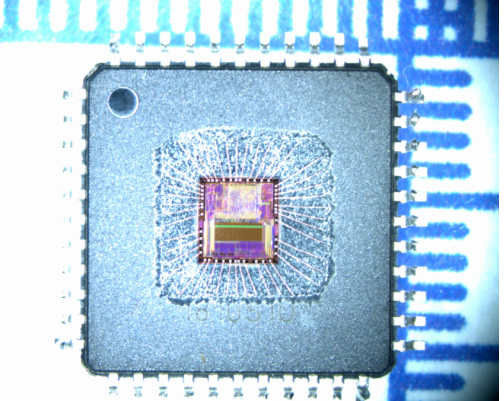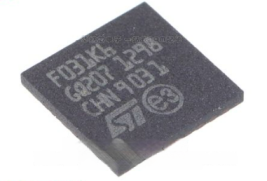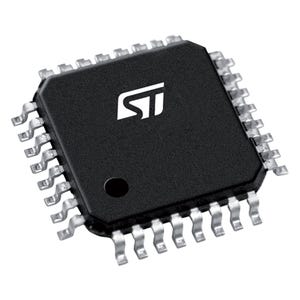Microcontroller STM32F031K6 Flash Memory Unlocking
Microcontroller STM32F031K6 Flash Memory Unlocking is a process to disable its security fuse bit which has protect the embedded firmware of flash memory, below image you can find the microcontroller silicon package has been decapsulated and heximal file inside flash memory of stm32f031k6 will be copied,

- VDD = VDDIO1 = 2.0 to 3.6 V: external power supply for I/Os (VDDIO1) and the internal regulator. It is provided externally through VDD pins.
- VDDA = from VDD to 3.6 V: external analog power supply for ADC, Reset blocks, RCs and PLL (minimum voltage to be applied to VDDA is 2.4 V when the ADC is used). It is provided externally through VDDA pin. The VDDA voltage level must be always greater or equal to the VDD voltage level and must be established first.
VBAT = 1.65 to 3.6 V: power supply for RTC, external clock 32 kHz oscillator and backup registers (through power switch) when VDD is not present.
The device has integrated power-on reset (POR) and power-down reset (PDR) circuits by cracking arm mcu stm32f030c6 flash memory. They are always active, and ensure proper operation above a threshold of 2 V. The device remains in reset mode when the monitored supply voltage is below a specified threshold, VPOR/PDR, without the need for an external reset circuit.

- The POR monitors only the VDD supply voltage. During the startup phase it is required that VDDA should arrive first and be greater than or equal to VDD.
- The PDR monitors both the VDD and VDDA supply voltages, however the VDDA power supply supervisor can be disabled (by programming a dedicated Option bit) to reduce the power consumption if the application design ensures that VDDA is higher than or equal to VDD.
The device features an embedded programmable voltage detector (PVD) that monitors the VDD power supply and compares it to the VPVD threshold. An interrupt can be generated when VDD drops below the VPVD threshold and/or when VDD is higher than the VPVD threshold.

The interrupt service routine can then generate a warning message and/or put the MCU into a safe state. The PVD is enabled by software.

